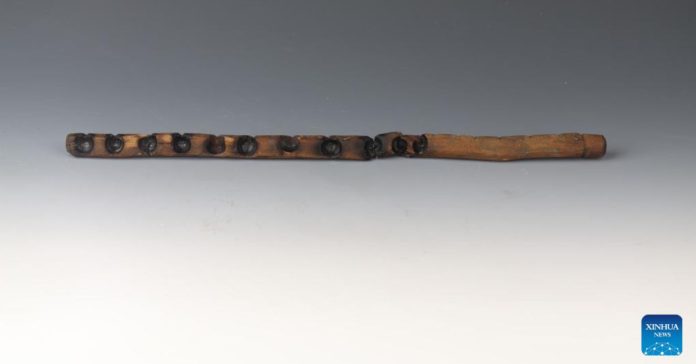In a fascinating find, researchers have uncovered an ancient set of tools used for drilling to create fire, dating back approximately 7,000 years, at an archaeological site in Jiangsu Province, eastern China. This discovery, made at the Caoyangang site, marks the earliest known physical evidence of fire-making technology in China.
Led by Gan Huiyuan, a researcher from the provincial institute of cultural relics and archaeology, the excavation revealed a well-preserved toolset consisting of a drill stick and a fireboard. The drill stick measures longer than 60 centimeters, while the fireboard exceeds 30 centimeters in length. The fireboard, featuring a surface with more than ten deep, blackened circular indentations, displays clear signs of scorching from repeated use.
Gan Huiyuan remarked, “This toolset is notable as the longest and best-preserved example of fire-drilling equipment uncovered at the site to date.” Since the excavation started, several similar tools have surfaced, though this particular set stands out. Additionally, one end of the fireboard includes a circular groove, likely intended for attaching a rope to facilitate carrying or hanging.
The Caoyangang site, spanning more than 80,000 square meters, has produced a wealth of artifacts beyond the fire-making tools. Archaeologists have recovered over 3,000 items, including pottery, bone tools, wooden objects, and animal remains such as those of deer, pigs, cattle, dogs, and various birds, along with aquatic plant remnants.
These findings offer a striking insight into the daily lives and cultural practices of the ancient inhabitants of the region, as reported by the archaeological team.

